What is the importance of portable construction site lights
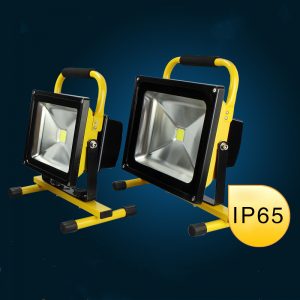 In order to implement the national laws, regulations, and technical and economic policies in the lighting design of outdoor work sites, to meet the functions of outdoor work sites, it is conducive to visual work, visual comfort, and improved work efficiency. Convenient maintenance and management, implement green lighting, and formulate this standard. Construction sites, especially tunnels and underground projects, have high requirements for lighting, not only for higher brightness and reliability, but also for uninterrupted lighting. At present, the lighting lamps commonly used at construction sites, such as incandescent lamps, fluorescent lamps, high-pressure sodium lamps, etc., are powered by the AC grid. Due to the complexity of the construction site, blackouts will inevitably occur. In order to ensure uninterrupted lighting at the construction site, emergency lighting power sources consisting of rectifiers, batteries and inverters are usually installed.
In order to implement the national laws, regulations, and technical and economic policies in the lighting design of outdoor work sites, to meet the functions of outdoor work sites, it is conducive to visual work, visual comfort, and improved work efficiency. Convenient maintenance and management, implement green lighting, and formulate this standard. Construction sites, especially tunnels and underground projects, have high requirements for lighting, not only for higher brightness and reliability, but also for uninterrupted lighting. At present, the lighting lamps commonly used at construction sites, such as incandescent lamps, fluorescent lamps, high-pressure sodium lamps, etc., are powered by the AC grid. Due to the complexity of the construction site, blackouts will inevitably occur. In order to ensure uninterrupted lighting at the construction site, emergency lighting power sources consisting of rectifiers, batteries and inverters are usually installed.
construction site lighting design
Lighting method and lighting type
The outdoor working site should determine the lighting method according to the following requirements:
1. usually should be set-like lighting;
2 When different areas in the same site have different illumination requirements, partition-like lighting should be used;
3 .For some operating sites, the illumination requirements are relatively high, and only sites with unreasonable general lighting should be used, and mixed lighting should be used;
4.Under special conditions, separate local lighting can be used.
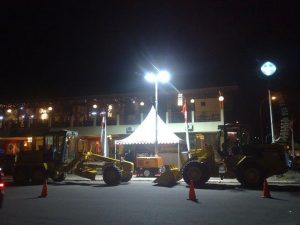 Emergency lighting should be provided in the following situations:
Emergency lighting should be provided in the following situations:
After the normal lighting goes out due to a fault, the site where normal operations or activities need to be continued should be provided with various lightings; after the normal lighting goes out due to a fault, the site where people who are potentially dangerous are safe should be provided with safety lighting; After the lighting is turned off due to a fault, exits and passages to ensure the safe evacuation of personnel should be provided with evacuation lighting. Guarding lighting shall be provided on the sites with guard tasks according to the requirements of the guard range. Sites that need to be on duty during non-working hours should be set on duty lighting. Obstacle lighting shall be provided on buildings and structures that endanger navigation safety according to navigation requirements.
Selection of lighting source
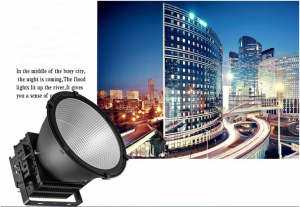 When selecting the light source, under the conditions of meeting the requirements of color rendering, start-up time, etc., a comprehensive technical and economic comparison and determination should be made according to the efficiency, life and price of the light source, lamps and ballasts.
When selecting the light source, under the conditions of meeting the requirements of color rendering, start-up time, etc., a comprehensive technical and economic comparison and determination should be made according to the efficiency, life and price of the light source, lamps and ballasts.
1.High pressure sodium lamps, metal halide lamps, fluorescent lamps and other new efficient lighting sources should be selected;
2 Yellow light high-pressure mercury lamps should not be used, and self-ballasted fluorescent high-pressure mercury lamps should not be used;
3 Incandescent lamps for general lighting should not be used.
4.Emergency lighting should use a fast-lighting light source.
5.The lighting design should select the light source with the corresponding color rendering index according to the identification color requirements and site characteristics.
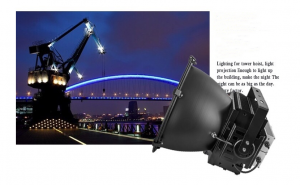 6.The ballast should be selected according to the following provisions in the lighting design:
6.The ballast should be selected according to the following provisions in the lighting design:
7.Straight-tube fluorescent lamps should be equipped with electronic ballasts or energy-saving inductive ballasts;
8.High-pressure sodium lamps and metal halide lamps should be equipped with energy-saving inductive ballasts; those with less power can be equipped with electronic ballasts; in sites with large voltage deviations, constant power ballasts should be used.
9.The installation distance between the trigger of the high-intensity gas discharge lamp and the light source should conform to the relevant national product standards.
Illumination / brightness requirements
Illumination standard value
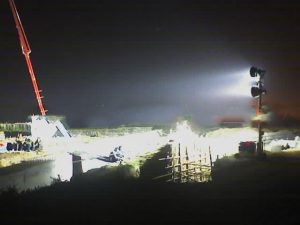 It should be graded as 2, 3, 5, 10, 15, 20, 30, 50, 75, 100, 150, 200, 300, 500, 750, 1000, 1500, 2000x. The illuminance values specified in this standard are the average illuminance values maintained on the work surface or reference plane. The average illuminance values maintained by various types of work sites shall meet the requirements of Chapter 5 of this standard. The standard value of illuminance on the working surface or reference plane when one of the following conditions is met.
It should be graded as 2, 3, 5, 10, 15, 20, 30, 50, 75, 100, 150, 200, 300, 500, 750, 1000, 1500, 2000x. The illuminance values specified in this standard are the average illuminance values maintained on the work surface or reference plane. The average illuminance values maintained by various types of work sites shall meet the requirements of Chapter 5 of this standard. The standard value of illuminance on the working surface or reference plane when one of the following conditions is met.
1 For visually demanding operations;
2 When visual work or operator moves;
3 When operation errors will cause great losses;
4 when precision and production efficiency are required;
5 When the operator’s vision is lower than normal vision;
6 the visual work details are very small, or when the brightness contrast is less than 0.3;
7 Visual work lasts particularly long.
Standard Illumination
1.The visual object is particularly large or when the height contrast is greater than 0.7;
2.Occasional visual assignments.
3.The illuminance value near the working surface may be lower than the illuminance value of the working surface, but it should not be lower than the requirements in Table 4.1 5.
4.In the lighting design, the maintenance factor should be 0.6 ~ 07 according to the outdoor environmental pollution characteristics and the number of times the lamp is wiped.
5.In general, the design illuminance value can have a deviation of -10% ~ + 20% compared with the standard value of illuminance.
Uniformity of illuminance The uniformity of illuminance at outdoor work sites shall not be lower than that specified in Chapter 5 of this standard. The uniformity of the illumination in the vicinity of the work area should not be less than 0.10.
Glare Limit
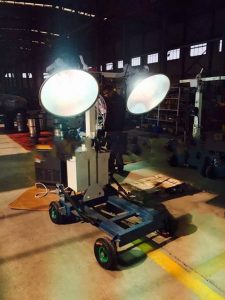 The glare value of outdoor working sites shall be evaluated by the glare value (GR). The (GR) value shall be calculated according to this standard. The maximum allowable CR value of each work site shall meet the requirements of Chapter 5 of this standard. To prevent or reduce glare, you can use the following methods: reasonable lighting; 2 limit the brightness of the lamp; 3 use diffuse reflective surface materials.
The glare value of outdoor working sites shall be evaluated by the glare value (GR). The (GR) value shall be calculated according to this standard. The maximum allowable CR value of each work site shall meet the requirements of Chapter 5 of this standard. To prevent or reduce glare, you can use the following methods: reasonable lighting; 2 limit the brightness of the lamp; 3 use diffuse reflective surface materials.
Light source color
The color table of the lighting source of the outdoor work site can be divided into three groups according to its correlated color temperature, and the correlated color temperature of the light source is determined. The general color rendering index Ra of various types of outdoor working sites shall not be lower than that specified in Chapter 5 of this standard. Where there is a need to identify safe colors, the color rendering index Ra of the lighting source should not be less than 20.
Limitation of light pollution
The light generated by lighting facilities should be controlled within the illuminated area, and the spill light should not be greater than 15%.
Selection of lighting fixtures at construction site
Traditional outdoor construction site lighting
1.Incandescent lamp
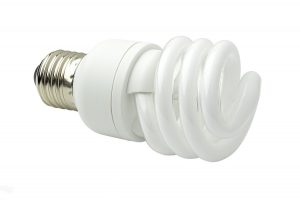 In 1879, since LA. Edison of the United States made carbonized fiber (ie, carbon filament) incandescent lamps, through continuous improvement of filament materials, filament structure, and allowable gas, the luminous efficacy of incandescent lamps has also increased accordingly. In 1959, Guan Yong developed a tungsten halogen lamp with extremely small volume and low attenuation based on incandescent lamps. The development trend of incandescent lamps is mainly the development of energy-saving light bulbs. Incandescent lamps with different applications and requirements have different structures and components. Light color and light collection performance are good, it is the largest output and most widely used electric light source. But its warm and yellowish colors are not always welcome. Japan’s most complete glass bulb incandescent lamp that can absorb yellow light with a wavelength of 570-590NM is on time in Japan, making the light color much whiter than that of ordinary incandescent lamps. For the total amount of electricity required, the lower luminous flux emitted generates 80% of the heat and only 20% of the light. Life is relatively short. Incandescent light has low efficiency, low power, long life and short life. It is not suitable for lighting at the construction site of geotechnical engineering. Generally it is only used for local lighting powered by 36V safety voltage. Incandescent lamp with 1 000W has a luminous flux of 18 000 lm.
In 1879, since LA. Edison of the United States made carbonized fiber (ie, carbon filament) incandescent lamps, through continuous improvement of filament materials, filament structure, and allowable gas, the luminous efficacy of incandescent lamps has also increased accordingly. In 1959, Guan Yong developed a tungsten halogen lamp with extremely small volume and low attenuation based on incandescent lamps. The development trend of incandescent lamps is mainly the development of energy-saving light bulbs. Incandescent lamps with different applications and requirements have different structures and components. Light color and light collection performance are good, it is the largest output and most widely used electric light source. But its warm and yellowish colors are not always welcome. Japan’s most complete glass bulb incandescent lamp that can absorb yellow light with a wavelength of 570-590NM is on time in Japan, making the light color much whiter than that of ordinary incandescent lamps. For the total amount of electricity required, the lower luminous flux emitted generates 80% of the heat and only 20% of the light. Life is relatively short. Incandescent light has low efficiency, low power, long life and short life. It is not suitable for lighting at the construction site of geotechnical engineering. Generally it is only used for local lighting powered by 36V safety voltage. Incandescent lamp with 1 000W has a luminous flux of 18 000 lm.
2.Iodine tungsten lamp
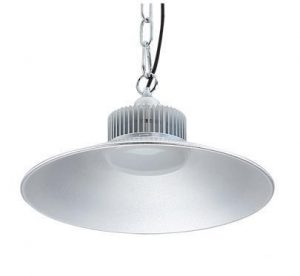 Iodine tungsten lamps have high power, high brightness, and simple installation. They are now the most widely used lamps in geotechnical engineering construction sites. The theoretical life of iodine tungsten lamp can reach thousands of hours, but the actual life in production is very short, generally only 80 ~ 100 hours. The reason is that the iodine tungsten lamp has a high requirement for the installation level. Once the horizontal tilt angle of the lamp tube exceeds ± 4 °, the filament will soon become thicker, thinner and burned out. The luminous efficiency of the tungsten iodine lamp is not high, and the flux of iodine tungsten lamp of 1 000 w is 21 000 lm.
Iodine tungsten lamps have high power, high brightness, and simple installation. They are now the most widely used lamps in geotechnical engineering construction sites. The theoretical life of iodine tungsten lamp can reach thousands of hours, but the actual life in production is very short, generally only 80 ~ 100 hours. The reason is that the iodine tungsten lamp has a high requirement for the installation level. Once the horizontal tilt angle of the lamp tube exceeds ± 4 °, the filament will soon become thicker, thinner and burned out. The luminous efficiency of the tungsten iodine lamp is not high, and the flux of iodine tungsten lamp of 1 000 w is 21 000 lm.
3.Dysprosium lamp
Krypton lamp is a high-intensity gas discharge lamp filled with a variety of rare earth metal halides in a quartz tube. It has high luminous efficiency, high power, good color rendering, long life, and is very suitable for lighting in geotechnical construction sites.Dysprosium lamp require special ballasts and triggers. The 1000w tritium light flux exceeds 70,001m, which is more than three times that of tungsten iodine lamps. The theoretical life of a tritium lamp can reach more than 6 000 hours. Since the tritium lamp is a gas discharge lamp, the installation conditions are not high and the shock resistance is good. Generally, the actual life is more than 3000 hours.
Portable LED Construction Site Energy-saving Lighting
The newly developed portable LED lighting system is small in size, light in weight, uses a sealed battery as a power source, and uses low-energy and high-brightness LEDs as a light source. The secondary optical lighting design is used to develop concentrated light (far light) and flood light (close light). Functional waterproof lighting system. This is an energy-saving, efficient, and environmentally-friendly mobile lighting system. It is widely used in field training, construction operations, emergency repairs, flood control, medical rescue, film and television shooting, and accident treatment. It can be used normally in bad weather environment such as wind and rain, blizzard and smoke. The portable engineering lighting LED-22N24-1 brings unlimited benefits to the military, police, fire protection, industrial, construction, security and rescue industries, saves users’ expenses, and protects our increasingly fragile environment.
Performance characteristics of portable LED lights:
1) LED building star adopts 3D three-dimensional convection heat dissipation technology, original blade convection heat dissipation, convection space e to accelerate heat dissipation to meet the harsh environment
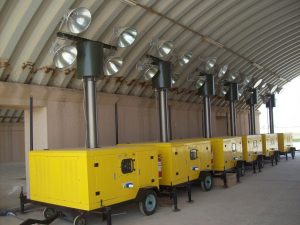 2) The LED building star achieves outdoor IP65 professional-grade protection, waterproof connector + silicone ring seal, protection grade IP65 waterproof and dustproof, not afraid of wind and rain. The box body and the lamp housing are made of high-strength plastic and equipped with good waterproof technology, which makes the system wear-resistant, waterproof and dust-proof, anti-static, impact-resistant and corrosion-resistant.
2) The LED building star achieves outdoor IP65 professional-grade protection, waterproof connector + silicone ring seal, protection grade IP65 waterproof and dustproof, not afraid of wind and rain. The box body and the lamp housing are made of high-strength plastic and equipped with good waterproof technology, which makes the system wear-resistant, waterproof and dust-proof, anti-static, impact-resistant and corrosion-resistant.
3) The LED building star uses imported high-end ultra-bright chips, ultra-high luminous flux, pure color, no frequency and no flicker. The light source has high luminous efficiency, low power consumption, good color rendering, power factor> 0.95, no flicker, no glare, which can effectively avoid the discomfort of the eyes of the staff, effectively avoid visual fatigue, and improve work efficiency.
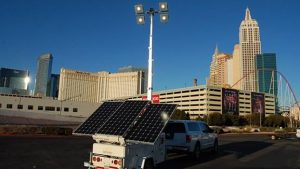 4) The LED building star is equipped with imported Taiwan drivers, with stable power conversion, safe and reliable output voltage, and escorting the long life of the lamp. The transparent parts used in the lamps and lanterns have undergone special tempering treatment, and have the characteristics of good transparency, impact resistance and thermal upheaval. The shell of the lamp is 6063 aluminum. The surface of the lamp is oxidized, which has a beautiful appearance and high strength. The large heat dissipation area reduces the failure rate of the lamp and prolongs the service life of the lamp. Each joint of the lamp is sealed with high temperature and aging resistant silicone strips, which is reliable waterproof and dustproof, and can be used for a long time in various harsh environments.
4) The LED building star is equipped with imported Taiwan drivers, with stable power conversion, safe and reliable output voltage, and escorting the long life of the lamp. The transparent parts used in the lamps and lanterns have undergone special tempering treatment, and have the characteristics of good transparency, impact resistance and thermal upheaval. The shell of the lamp is 6063 aluminum. The surface of the lamp is oxidized, which has a beautiful appearance and high strength. The large heat dissipation area reduces the failure rate of the lamp and prolongs the service life of the lamp. Each joint of the lamp is sealed with high temperature and aging resistant silicone strips, which is reliable waterproof and dustproof, and can be used for a long time in various harsh environments.
5) The star of LED building uses the first-level reflector, the reflector adopts spraying technology, does not fade, and has a high reflective index to ensure the projected light
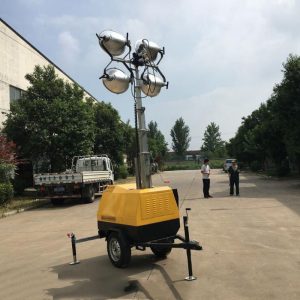 The lighting system can be easily and quickly disassembled and assembled into a safety waterproof box, which is convenient to carry and transport. It is powered by livestock batteries that can be repeatedly charged and cycled, without generators, energy saving, high efficiency, environmental protection, and no noise. The lamp head is composed of high-brightness LED lamps, which ensure the system’s low energy consumption, high reliability and long life. The lamp life is more than 50,000 hours, and there is no need to replace it for life. The brightness of each lamp head (power 16 watts / 24 watts) is equivalent to the brightness produced by light sources such as traditional incandescent lamps consuming 300-500 watts of power. Lamp head design with spotlight (far light), flood light (close photo) function, convenient search and rescue and emergency lighting. Equipped with a retractable bracket, the extension height is 1.8-2.1 meters, and the lamp head can be rotated 360 degrees, which is convenient for illuminating any area. The irradiation angle is 15 degrees (focusing) and 90 degrees astigmatism.
The lighting system can be easily and quickly disassembled and assembled into a safety waterproof box, which is convenient to carry and transport. It is powered by livestock batteries that can be repeatedly charged and cycled, without generators, energy saving, high efficiency, environmental protection, and no noise. The lamp head is composed of high-brightness LED lamps, which ensure the system’s low energy consumption, high reliability and long life. The lamp life is more than 50,000 hours, and there is no need to replace it for life. The brightness of each lamp head (power 16 watts / 24 watts) is equivalent to the brightness produced by light sources such as traditional incandescent lamps consuming 300-500 watts of power. Lamp head design with spotlight (far light), flood light (close photo) function, convenient search and rescue and emergency lighting. Equipped with a retractable bracket, the extension height is 1.8-2.1 meters, and the lamp head can be rotated 360 degrees, which is convenient for illuminating any area. The irradiation angle is 15 degrees (focusing) and 90 degrees astigmatism.
Traditional construction site lighting VS LED portable lighting
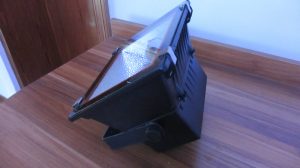 Through the above comparison, the self-inductive DC 12V-powered portable LED lamp lighting is used in the construction site lighting. The lighting layout and illuminance are more scientific and reasonable. The fixed cost of one-time investment and the consumption cost during daily use are greatly saved. At the same time, temporary buildings such as temporary offices, conference rooms, warehouses, etc. on the construction site are all designed with LED lights, which can save considerable costs. In short, LED light sources have significant advantages such as energy saving, environmental protection, safety, long life, rich colors, and reliable performance. With the rapid improvement of the light efficiency of LED light sources, the gradual maturity of the technology level of LED light distribution design and the reduction of the price of LED light sources, LED lighting fixtures have obvious competitive advantages compared with traditional lamps with the same efficiency. The comprehensive cost is obviously lower than traditional lamps, and it will become one of the most competitive mainstream lighting sources.
Through the above comparison, the self-inductive DC 12V-powered portable LED lamp lighting is used in the construction site lighting. The lighting layout and illuminance are more scientific and reasonable. The fixed cost of one-time investment and the consumption cost during daily use are greatly saved. At the same time, temporary buildings such as temporary offices, conference rooms, warehouses, etc. on the construction site are all designed with LED lights, which can save considerable costs. In short, LED light sources have significant advantages such as energy saving, environmental protection, safety, long life, rich colors, and reliable performance. With the rapid improvement of the light efficiency of LED light sources, the gradual maturity of the technology level of LED light distribution design and the reduction of the price of LED light sources, LED lighting fixtures have obvious competitive advantages compared with traditional lamps with the same efficiency. The comprehensive cost is obviously lower than traditional lamps, and it will become one of the most competitive mainstream lighting sources.
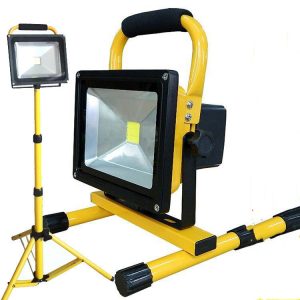 In the future, LED, as an energy-saving, environmentally friendly, long-life light source, will be rapidly promoted and applied in the lighting field. The application of LED is manifested in many aspects, from the wide application of LED displays to LED energy-saving lamps. It can be said that the application of LEDs has penetrated into various industries at this stage. The development of today’s society has led to energy exhaustion, and LED lighting has many The advantage is that the light it emits is a cold light source, high light efficiency, low working voltage, low energy consumption, long life, environmental protection and pollution-free, safe, reliable and easy to maintain. LED is powered by DC power supply, no inverter is required for the battery. At the same time, because it uses DC constant current power supply, the LED lamp has no flicker. At the same power, its luminous intensity is more than 40% higher than ordinary fluorescent lamps and high-pressure sodium lamps. Up to 50 000h, so the use of LED lights at the construction site can not only save electricity, but also ensure the quality of lighting. We can provide construction site lighting devices with small size, low cost, long life, good power saving effect and high reliability.
In the future, LED, as an energy-saving, environmentally friendly, long-life light source, will be rapidly promoted and applied in the lighting field. The application of LED is manifested in many aspects, from the wide application of LED displays to LED energy-saving lamps. It can be said that the application of LEDs has penetrated into various industries at this stage. The development of today’s society has led to energy exhaustion, and LED lighting has many The advantage is that the light it emits is a cold light source, high light efficiency, low working voltage, low energy consumption, long life, environmental protection and pollution-free, safe, reliable and easy to maintain. LED is powered by DC power supply, no inverter is required for the battery. At the same time, because it uses DC constant current power supply, the LED lamp has no flicker. At the same power, its luminous intensity is more than 40% higher than ordinary fluorescent lamps and high-pressure sodium lamps. Up to 50 000h, so the use of LED lights at the construction site can not only save electricity, but also ensure the quality of lighting. We can provide construction site lighting devices with small size, low cost, long life, good power saving effect and high reliability.



